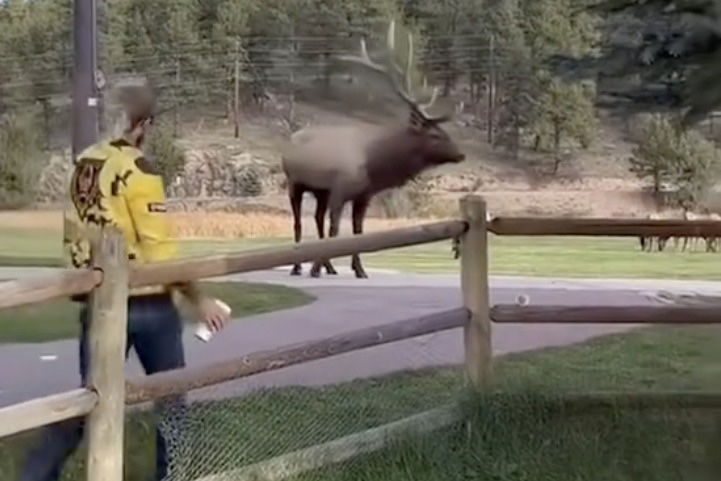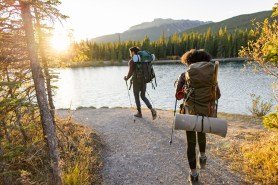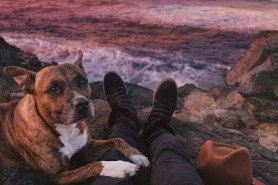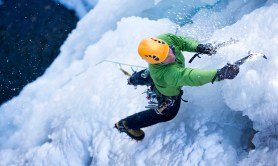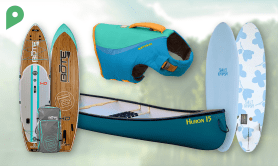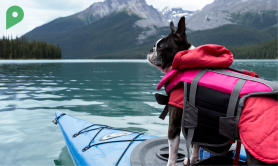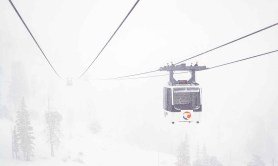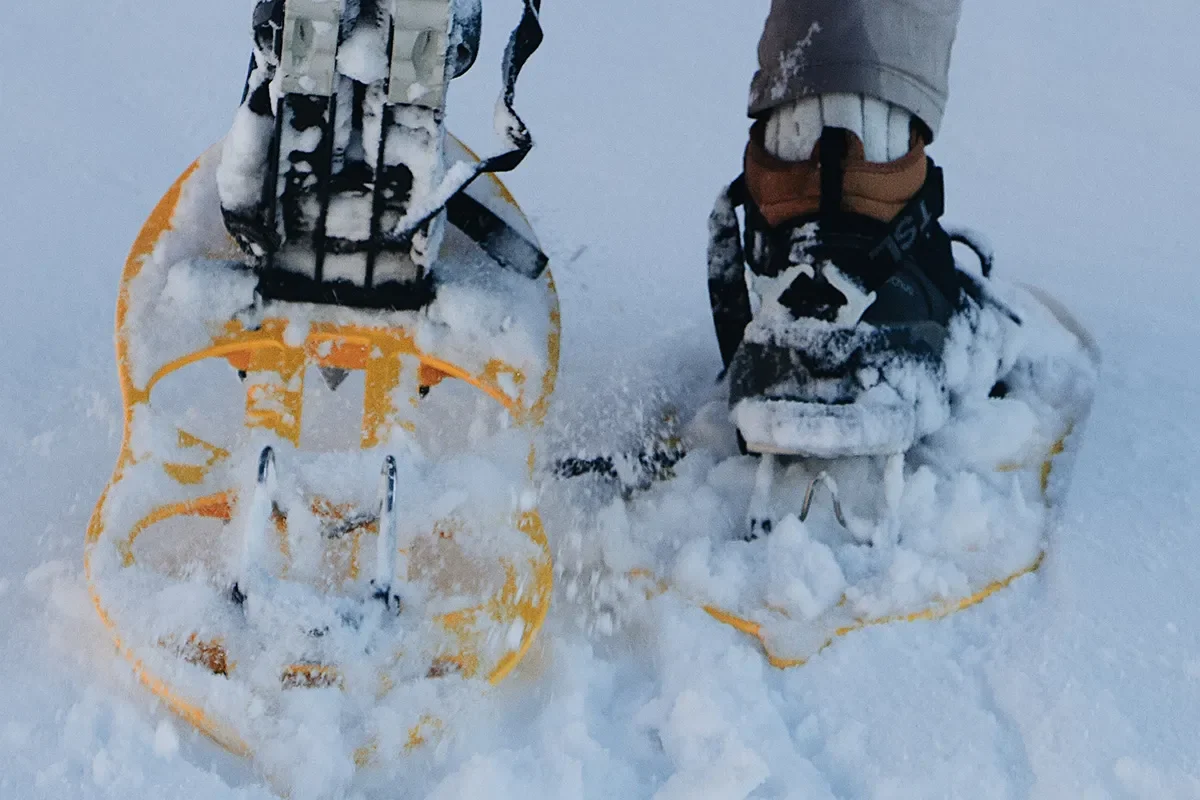

The popularity of snowshoeing has grown in the past couple of years, making it a great new activity for winter adventurers. Exploring the world when it’s a winter wonderland is an awesome experience that snowshoers have been doing for decades.
Videos by Outdoors
Whether you’re looking for a new fun outdoor activity to try this season, or you’re seeking a more accessible form of exercise for the winter months, you’re going to need the right gear. So we’re rounding up the best snowshoes for 2024.
Our top pick for snowshoes would be the MSR Lightning Ascent. Made for serious snow conditions, these snowshoes are lightweight and come in three different sizes to make sure that everyone can find a pair that fits them comfortably.
When you’re in the market for a new pair of snowshoes, there are a lot of factors that you’ll want to consider. We’ve put together a guide on how to buy your next pair of snowshoes and answered some of the frequently asked questions about them.
This post contains affiliate links. Outdoors.com may earn a commission when you make a purchase through these links. Thank you for your support.
Top Snowshoes for 2024
- Best Snowshoes for Serious Snow Conditions – MSR Lighting Ascent Snowshoes
- Best Snowshoes for Beginners – Tubbs Xplore 25 Snowshoe
- Best Snowshoes for Consistent Use – MSR Revo Explore Snowshoes
- Best Snowshoes for Wandering – MSR Evo Trail Snowshoes
- Best Snowshoes for the Mountains – MSR Evo Ascent Snowshoes
- Best Budget-Friendly Snowshoes – Retrospec Snowshoe Bundle
- Snowshoes for Runners – Atlas Race
- Snowshoes for the Kids – Tubbs Snowflake Snowshoes
Best Snowshoes for Serious Snow Conditions – MSR Lightning Ascent Snowshoes
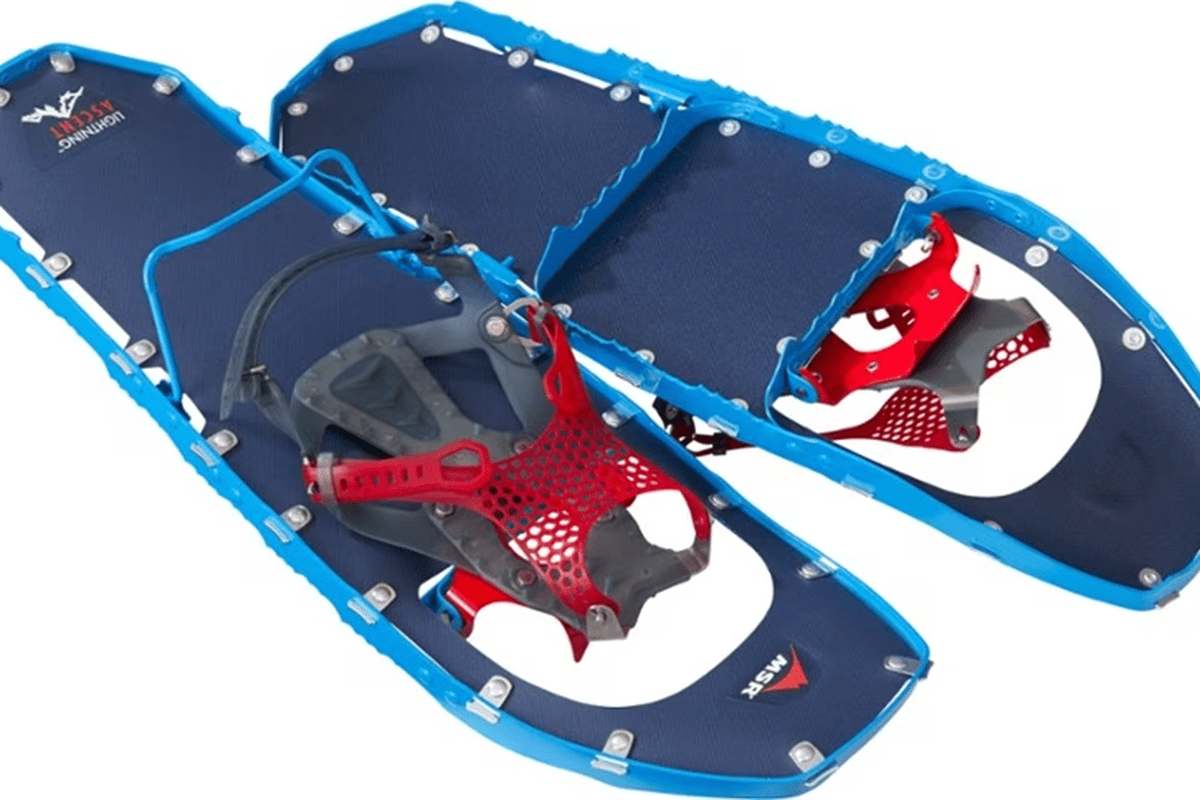
These snowshoes are made to be used on mountain terrain and feature steel crampons for your toes and heels. The binding system also helps prevent fatigue while you’re on the trails and fits around a wide array of winter boots.
With three sizes to choose from, there’s an option that will fit your feet comfortably and securely. If you’re looking for a little extra height, make sure you check out the heel lift capabilities. These snowshoes are made to go from packed snow to deep powder without having to change your shoes.
The snowshoe frame is made of aluminum, and features a rubber strap closure. The MSR Lightning Ascent Snowshoes have Paragon bindings that are freeze-resistant and will fit safely and securely over a variety of different styles of snow boots.
Those who have gone snowshoeing before say that these are a great pair to wear, some even have said that these are the best snowshoes. The snowshoes are light and easy to get on and take off after a long day on the trails.
These snowshoes lasted one reviewer over 50 miles in a week and they’re excellent for steep terrain. Though MSR Lightning Ascent snowshoes are well-loved by many, though some reviewers have noted that they don’t fit the best with Keen winter boots.
Best Snowshoes for Beginners – Tubbs Xplore 25 Snowshoes
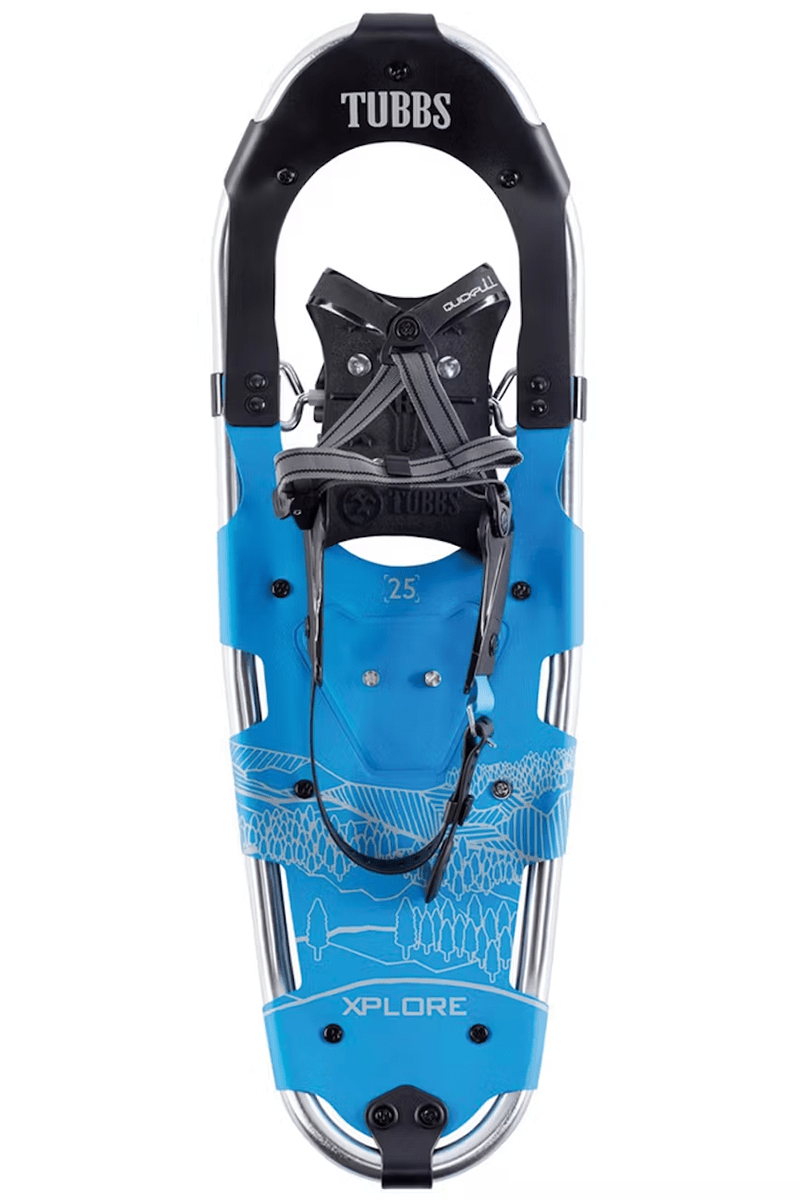
Made with specific men’s and women’s fits, Tubbs snowshoes are a great pair of snowshoes if this is your first season heading out on the trails. The Tubbs snowshoes are best for flat terrain and powdery snow.
These snowshoes are made to be easy to use whether you’ve never been snowshoeing or you learned to walk on the snow. The innovative, upturned tail reduces the impact snowshoeing has on your hip, knee, and ankle joints, according to a study done at Colorado State University.
The Tubbs Xplore Snowshoes feature heel crampons that will bring traction and stability, whether you’re on steep or flat terrain. These Snowshoes are made to take on any conditions, making them a great set of snowshoes for those who are just starting out, or if you’ve been snowshoeing for years and are just looking for a reliable new set of shoes.
The Tubbs Xplore snowshoes come with a lifetime warranty and when one consumer’s snowshoe broke after extensive use, Tubbs fixed the shoes for free, no questions asked. Reviewers love how these snowshoes fit around their snow boots and the toe crampons provide excellent traction out on the snow.
Though they are best for flat terrain, these snowshoes can be used in deep snow and steep terrain.
Best Snowshoes for Consistent Use – MSR Revo Explore Snowshoes
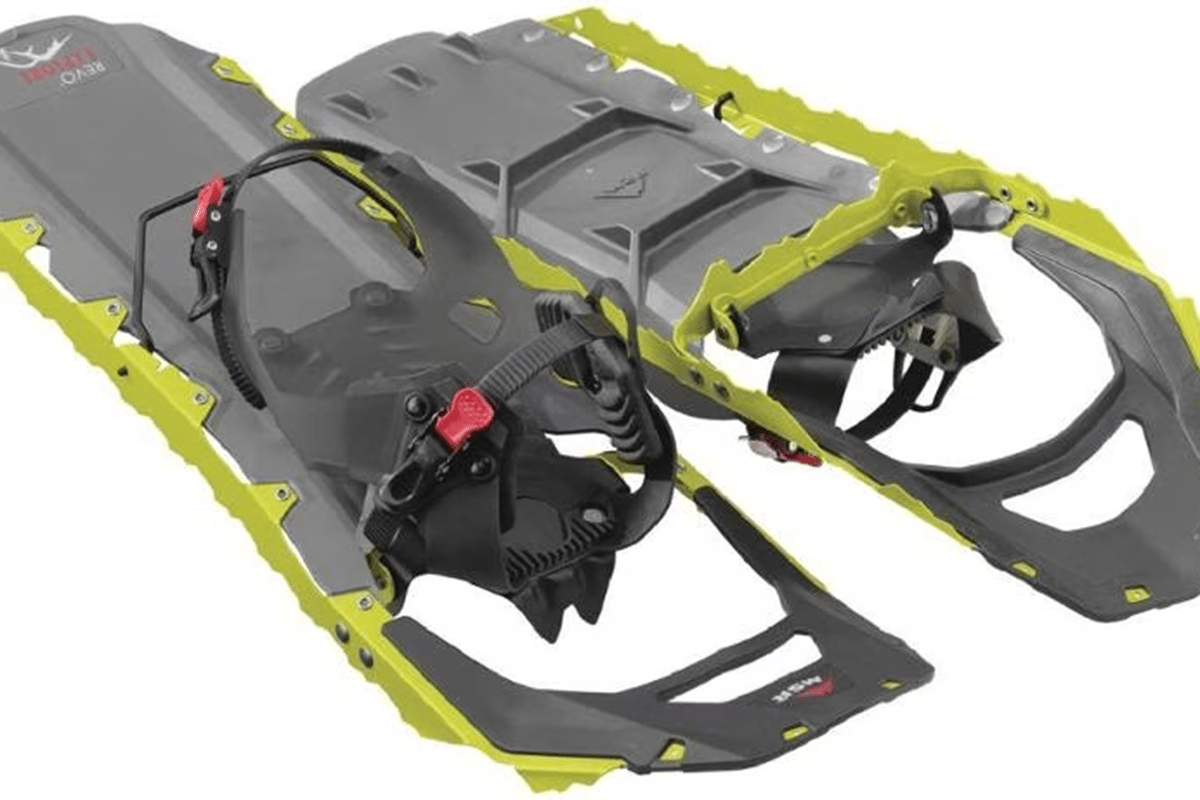
Built for off-trail, rolling terrain these snowshoes are made of martensitic steel. The snowshoes feature a heel lift that will give you some extra height to decrease fatigue when you need it and the shoes come in two sizes.
The boots feature external traction teeth that will keep you firmly planted even when you’re in rugged terrain. The snowshoes are made of plastic, making them extremely durable and great for any conditions, including more technical terrain.
The MSR Revo Explore Snowshoes have steel crampons and if you’re looking to go from packed snow to deep powdery snow, you can add on modular flotation tails.
These snowshoes are great for long-term use. One reviewer states that she lives in Western Colorado and has been using these for the last three years. She said that the ratchet strap snowshoe closure is a game changer that makes getting these shoes on and off a lot easier than other shoes before.
Best Snowshoes for Wandering – MSR Evo Trail Snowshoes
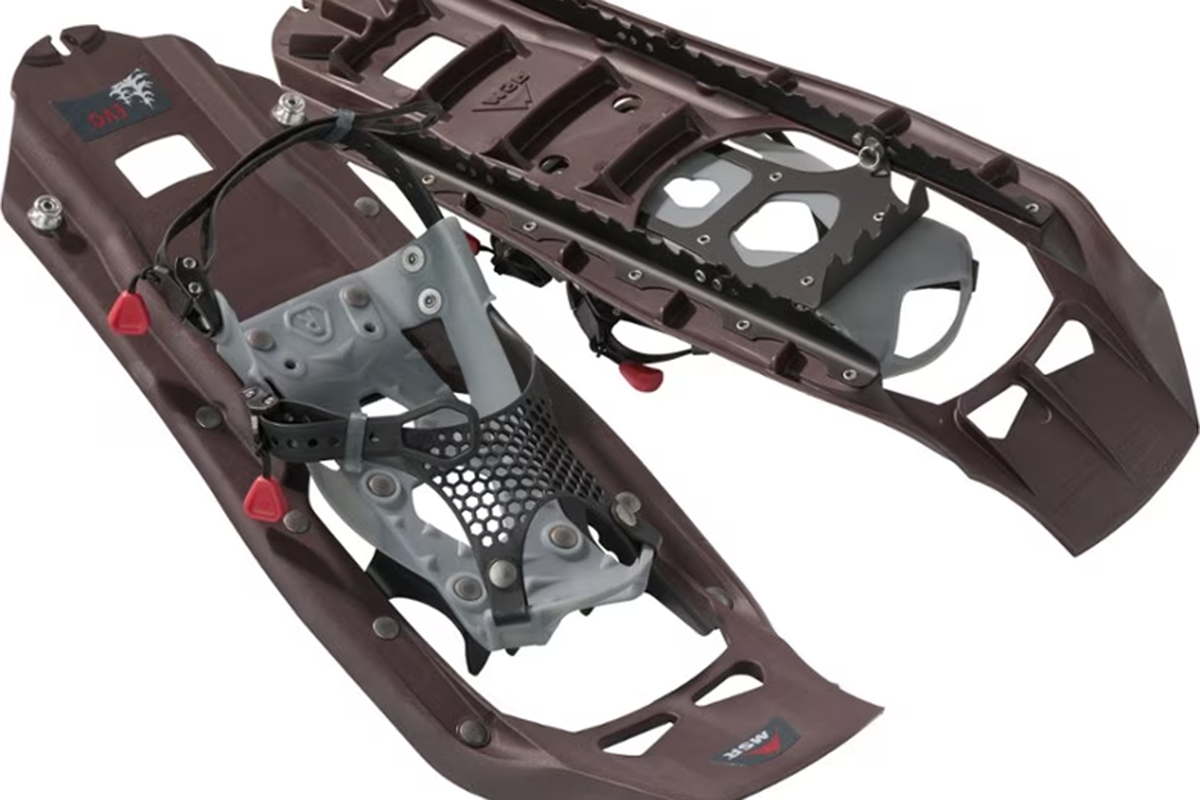
If you’re looking for a pair of snowshoes that will allow you to roam for hours, the MSR Evo Trail snowshoes are the snowshoes for you.
With a maximum weight of 180 pounds, these snowshoes will leave you feeling secure when placing your feet while wandering through the snowshoe bindings. These snowshoes have crampons on the toes and heels to keep your feet secure and the stretch mesh bindings hug your feet and fit in any footwear.
The MSR Evo Trail snowshoes are unisex snowshoes that weigh less than four pounds per pair. The lightweight snowshoes have molded plastic decks for the harshest conditions and feature steel traction rails for a secure binding system and give you a lasting grip.
Best Snowshoes for the Mountains – MSR Evo Ascent Snows
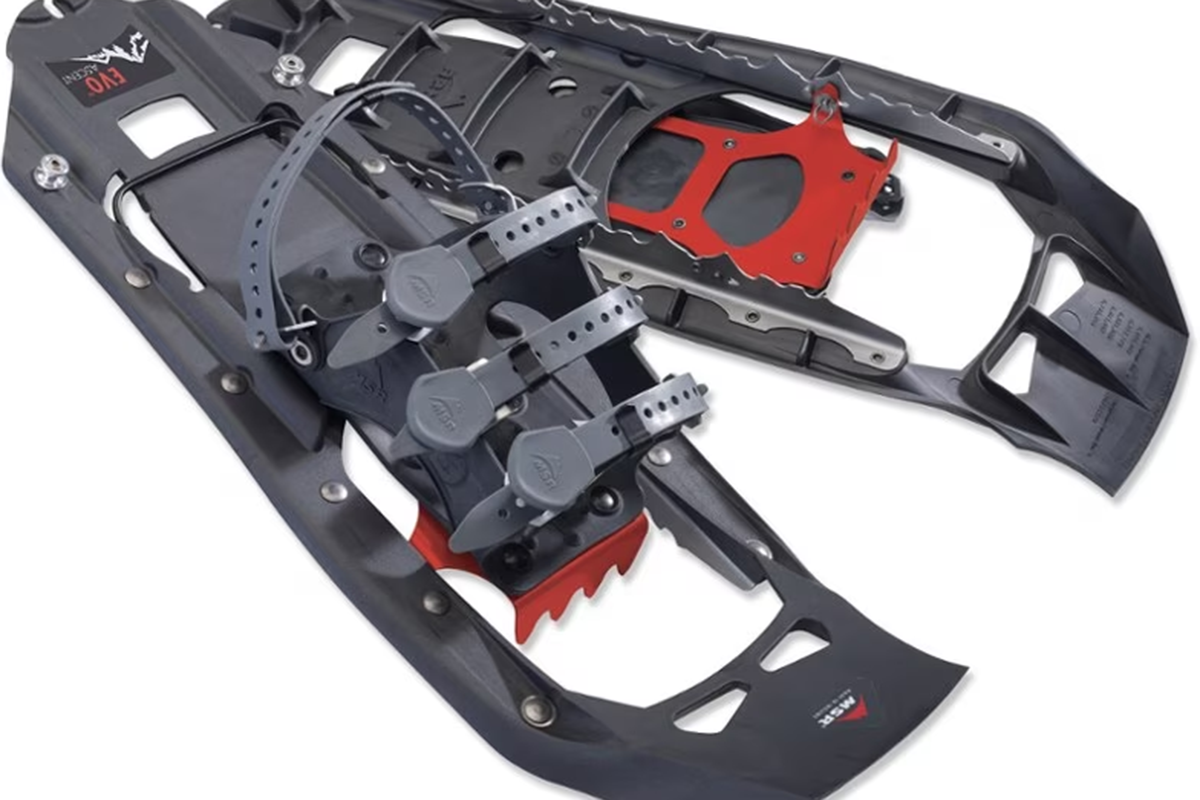
Climbing a mountain is no simple feat, especially in the snow. The MSR Evo Ascent snowshoes are made to keep you secure even as you climb and feature heel lifts to prevent extra fatigue on the trails.
These snowshoes feature a three-strap binding system that is freeze-resistant and can be adjusted easily even with your gloves on. These snowshoes are made to fit with a variety of different shoes so you won’t have to go out and buy new ones to accommodate your snowshoes.
Without tails (not included in your purchase) the recommended maximum weight is 180 pounds. If you choose to add tails, the maximum recommended weight is 250 pounds.
These snowshoes are designed to be thin, meaning you won’t have to worry about them bumping up against one another, whether you’re in deep snow or on groomed trails. Reviewers like these snowshoes because they are light, and come in a large variety of sizes.
Others say it is important to note that these snowshoes don’t fit great for those who are a bit more petite.
Best Budget-Friendly Snowshoes – Retrospec Snowshoe Bundle
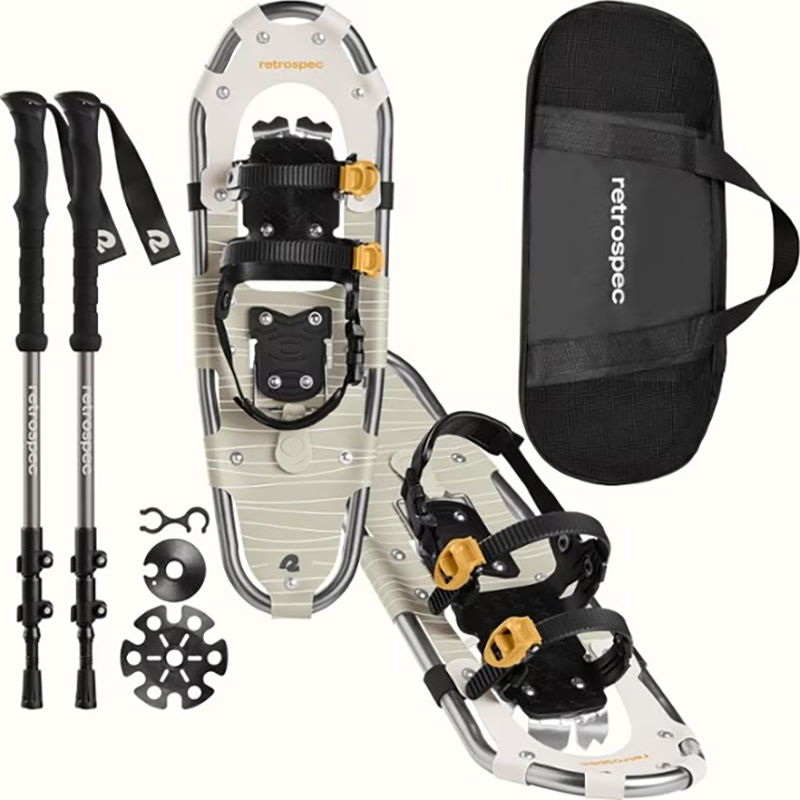
Retrospec makes great snowshoes and offers this bundle for those who are on a tight budget. These snowshoes come with snowshoes, trekking poles, and a storage bag for when you’re done exploring the mountains.
These snowshoes are lightweight and durable and are made for exploring the backcountry and will literally keep you on your toes to ensure an enjoyable time out in the snow.
The shoe’s decks are made from tough polyethylene with double ratchet bindings and heel lifts that will give you extra traction and relieve your calves when you need it the most.
This snowshoe bundle is well loved, though it’s important to note that the spikes on the bottom can sometimes attract a build-up of ice and snow, which means you might need to stop and clean them off while you’re out in the backcountry.
Overall, it’s hard to beat this bundle at this price point, especially if you’re looking for your very first pair, or you’re on a tight budget.
Snowshoes for Running – Atlas Race
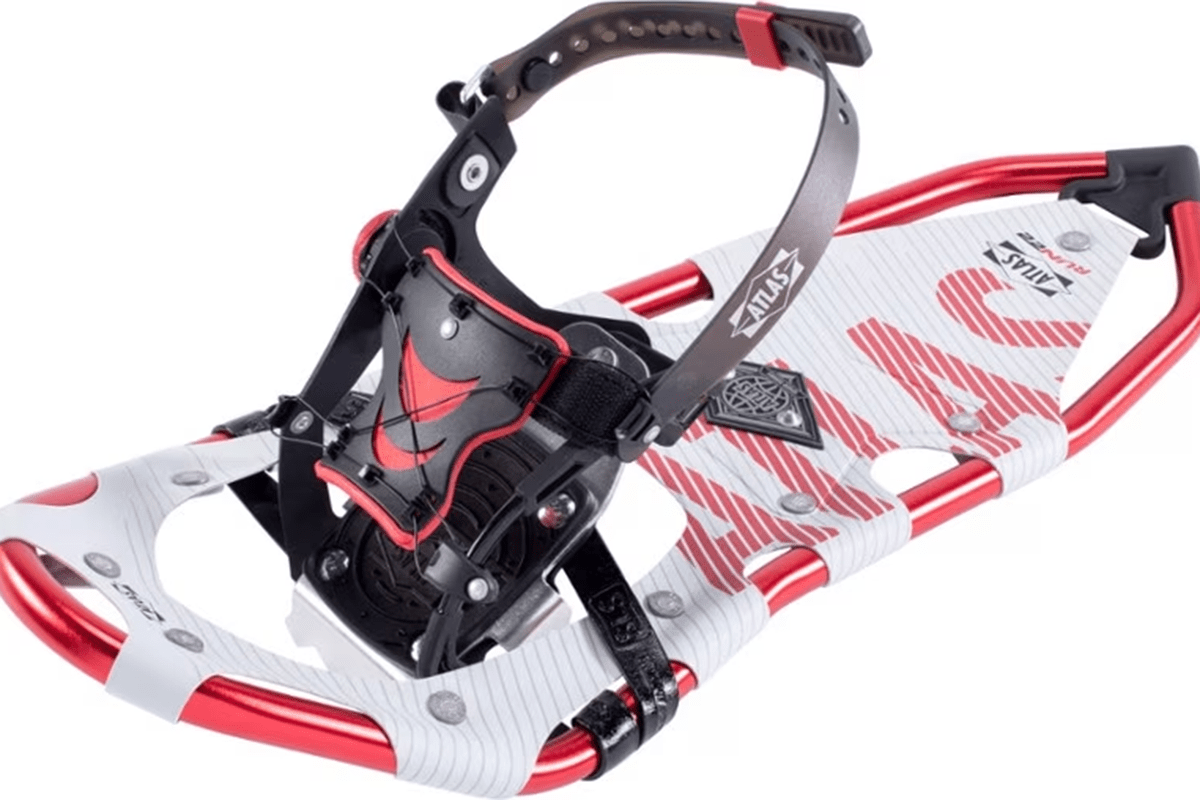
Are you a runner that just can’t get enough of the trails, even in the winter? Well, you’re in luck because the Atlas Race snowshoes are made with runners in mind. These lightweight snowshoes are designed with a Z-shape configuration that will help you race through the snow.
The Speed V-Frame is made for when you’re in a full sprint, providing maximum floatation even as you run on top of deep snow. Atlas designed these snowshoes to prevent frame clipping when you’re running at full speed.
The Atlas Race snowshoes used a flexible nytex for the decking which will allow you to travel through the snow without making too much noise. These snowshoes also feature an aluminum cleat that will help you up the hills when you’re traveling up the mountain.
The snowshoes are great for running but you can rest assured you’ll be able to head out in the snow and go for a leisurely walk as well. With aluminum crampons, the Atlas Race snowshoes will give you a 360-degree engagement that goes all the way around the foot.
Snowshoes for Kids – Tubbs Snowflake Snowshoe
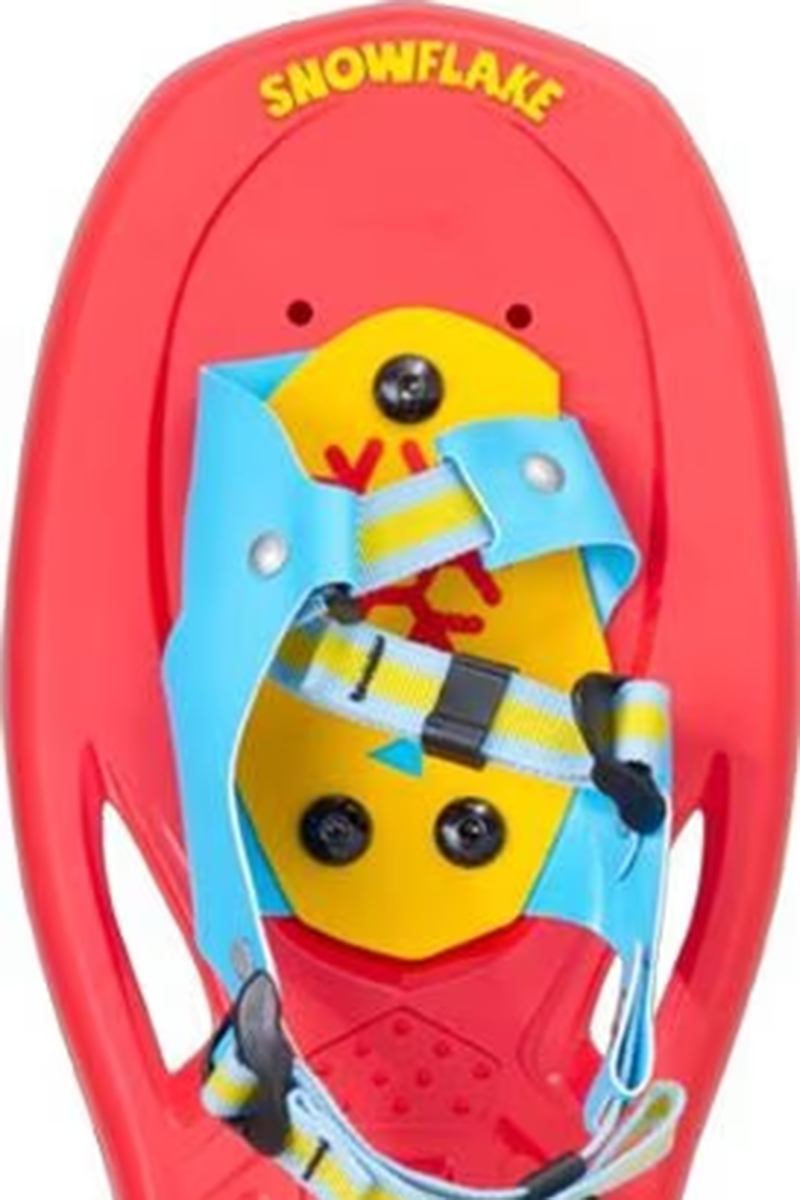
Taking your kiddos on their first snowshoeing excursion? These snowshoes were designed by Tubbs with the youngest ages in mind; children ages three to six and will support the kids as they learn the ropes of snowshoeing.
The Snowflake snowshoes feature a two-step binding system and a sticker packet for kids to decorate and customize their snowshoes so that they’re uniquely their own. The Tubbs Snowflake Snowshoes are flat terrain snowshoes that are great for the beginner snowshoer.
With a user weight of under 50 pounds, these are great shoes for the littles when you’re heading out on the packed trails… or the super deep snow in your backyard.
Kids love them because they get to spend time with their parents exploring the great outdoors, and parents love them because they prevent kids from sinking into the snow, and they’re super easy to use and kid-friendly.
Best Tips for Buying Snowshoes
If you’ve never purchased your own pair of snowshoes, it can be really hard to know where to start. We’re going to go over the different kinds of snowshoes. From there, you’ll know the best kind to buy for your outdoor adventuring.
Snowshoes are super helpful when you’re winter hiking, but if you’ve never gone snowshoeing before, it can be a bit daunting to try and figure out what kind of shoes you need and where you need to start. The key is to do your research before hitting “buy now.”
You’re going to need to have an idea of what kind of terrain you’re going to be snowshoeing on. Is it deep snow? Groomed trails? steep or technical terrain? It’s important to know so you can buy the right kind of shoe.
The majority of snowshoes are made for flat or rolling terrain or mountain terrain. If you’ll be heading out on a variety of terrain styles, it’s important to make sure the snowshoes you have on are made for the conditions you’re traversing.
A good general rule to follow is that if you’ll be exploring on soft, powdery snow, you’ll want to purchase a snowshoe with a larger footprint. If you’ll be out on packed snow, you’ll want to purchase a snowshoe with a smaller footprint.
When you’re in the market for a new pair of snowshoes, make sure you know how much you and your gear weigh. Each pair of snowshoes will have a maximum load that they can carry. Do not go over that load.
You’ll have to wear snow boots in your snowshoes. If you don’t have snow boots, waterproof boots like hiking boots will also work, as long as they fit in the snowshoes.
Kinds of Snowshoes
There are three kinds of snowshoes that you can purchase, and it’s important to know the difference before purchasing the wrong kind of snowshoe before a big winter hike. Here’s what you need to know about each kind of snowshoe
Flat Terrain Snowshoes:
Flat-terrain snowshoes are excellent for casual use and they’re usually a more inexpensive option that will let you explore the outdoors in the winter without falling deep into the snow. Flat Terrain snowshoes have a simple binding system but do not feature a heel lift, so don’t take them on steep slopes.
Rolling Terrain Snowshoes:
Rolling terrain snowshoes are a great in-between option, and they usually have a moderate price to go with them. Go from flat to moderately sloping terrain, but avoid steep conditions and ice when you’re in a pair of rolling terrain snowshoes.
These snowshoes will feature a moderately aggressive set of crampons to ensure traction on the trails and an easy-to-adjust binding system. If you’re going to be needing a heel lift, make sure you research the pairs you’re interested in purchasing. Most snowshoes for rolling terrain feature a heel lift but not all.
Mountain Terrain Snowshoes:
Mountain snowshoes are going to be the most expensive snowshoes that you can purchase and they’re designed to handle steep hills and icy terrain.
Mountaineering snowshoes will feature an aggressive crampon system to ensure traction on ice and steep terrain. These snowshoes will also feature a binding system that can accept a more intense pair of boots made for more intense outdoor activity.
Mountain terrain snowshoes will usually have a heel lift to help you up those steep mountainsides.
Budget
Snowshoeing can be a difficult hobby to get into if you’re on a tight budget. The majority of snowshoes for adults will cost you over $100 and can even get close to $300. Though you may find some snowshoes online for less than $100, they’re most likely made of cheap materials.
If you haven’t decided whether or not you’re ready to commit to snowshoeing for the entire winter season, you can usually rent these from gear shops or even from ski lodges when you arrive.
Frequently Asked Questions About Snowshoes
What size snowshoes do I need?
When you’re picking out your snowshoes, it can be hard to understand what size snowshoes you need. Snowshoes are measured in inches, the smallest being seven inches.
You’ll need to know roughly how much you weigh (and how much your gear weighs on top of that) and from there you can pick the size of your snowshoe.
Most of the time, children’s snowshoes are anywhere from seven to 16 inches, Women will fit in snowshoes sizes eight to 25 inches and men will fit in sizes between eight and 36 inches.
Is there a right and a left show?
Your snowshoes will fit on either foot, though it is recommended that you have your binding buckles facing the outside of your foot.
What’s the difference between men’s and women’s snowshoes?
Although women can wear men’s style snowshoes, many companies make snowshoes in both men’s and women’s designs for a more unique and comfortable fit. Because women are usually smaller than their male counterparts, their shoes don’t need to be as big.
What kind of shoes do I wear in my snowshoes?
Despite the name, snowshoes are not a pair of shoes that you can just throw on and go. You’ll need to make sure you have a comfortable and waterproof pair of hiking or snow boots to wear with your snowshoes.
It doesn’t matter the exact kind. Just make sure they fit within your snowshoes and they’re going to keep your feet warm and dry in cold, wet, and icy conditions.
Do I need poles to go snowshoeing?
Even though you don’t need poles to go snowshoeing, they’re highly recommended, especially when you’re going to be snowshoeing on a difficult hill. Adding poles to your snowshoeing gear will help you stay steady out on the trails.
Do I need a heel lift?
You don’t need a heel lift. But when you’re heading out on an adventure that includes a steep incline, they’re important to consider as a part of your purchase.
Heel lifts help keep your heel centered and alleviate calf strain and fatigue when you’re out adventuring.
Are bindings important to consider?
Yes. Bindings are incredibly important to consider. The binding system on your snowshoe will help you keep a snug and secure fit when you’re hiking through different kinds of snow. The last thing you need is to lose a snowshoe.
How do I pick the right kind of snowshoe?
Picking the right style of snowshoe depends on the kind of snowshoeing you’ll be doing. You’ll also want to look into the frame and deck material and the crampon, binding, and axle systems of the shoes.
Looking for crampons for winter hiking? Check out our list of suggestions.
What kind of clothing do I wear while snowshoeing?
Like many winter sports and activities, you’re going to want to dress in layers. Snowshoeing is an aerobic activity that will warm up your body. Make sure you have moisture-wicking layers so that when you do cool down you won’t get overly cold.
It is recommended to wear gaiters to help keep your feet dry and warm when you’re in the snow.
Conclusion
Finding the right pair of snowshoes can be tricky, especially if you’re new to them or you’ve only ever rented snowshoes on vacation before.
Make sure you keep in mind what kind of snow and walking conditions you’ll be taking on before pressing ‘buy now’ or swiping your card. If you’ll be trekking up an intense hill, you’re going to want something that’s ready to take on that terrain and will help alleviate discomfort as you go.
You’ll also want to make sure the snowshoes that you’re interested in buying fit your snow boots or waterproof shoes. Remember to keep your budget in mind before you purchase anything.
You’ll also want to consider what other gear you may need to pick up to help you have a successful snowshoeing trip. Along with the other gear you might have to purchase, you’ll also have to keep in mind the weight of your gear, to make sure you don’t go over the maximum weight your snowshoes can handle.
